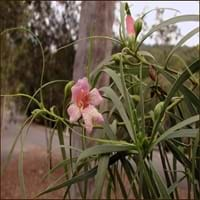Life Span
Perennial
Annual and Perennial
Type
Shrub
Bulb or Corm or Tuber
Origin
Hybrid origin
Central America, South America
Types
Pixie Bush, Claypan Grass
Vine, Flowering plant
Number of Varieties
Not Available
Habitat
Desert, Dry areas
All sorts of environments, Along Railroads, Banks, Moist Ditches, Roadsides, rocky banks of streams
USDA Hardiness Zone
9-11
10-13
Sunset Zone
8, 9, 13, 14, 15, 16, 17, 18, 19, 20, 21, 22, 23, 24
21,22
Habit
Upright/Erect
Vining/Climbing
Minimum Width
Not Available
Flower Color
Magenta, Rose
Purple, Rose
Flower Color Modifier
Not Available
Bicolor
Fruit Color
Light Pink
Not Available
Leaf Color in Spring
Purple, Light Green, Gray Green
Purple, Dark Green, Black
Leaf Color in Summer
Purple, Olive, Gray Green
Light Green
Leaf Color in Fall
Purple, Olive, Gray Green
Several shades of Green
Leaf Color in Winter
Purple, Olive, Gray Green
Light Green
Leaf Shape
Irregular
Acicular
Plant Season
Spring, Summer, Fall, Winter
Spring, Summer, Fall, Winter
Sunlight
Full Sun, Partial Sun
Full Sun, Partial Sun
Growth Rate
Medium
Very Fast
Type of Soil
Loam, Sand
Clay, Loam, Sand
The pH of Soil
Acidic, Neutral, Alkaline
Acidic, Neutral, Alkaline
Soil Drainage
Well drained
Well drained
Bloom Time
Early Spring, Spring, Late Winter
Late Spring, Early Summer, Summer, Late Summer, Early Fall, Fall, Late Fall
Tolerances
Cold climate, Light Frost, Pollution
Drought
Where to Plant?
Ground, Pot
Container, Ground
How to Plant?
Grafting, Seedlings, Stem Planting
Cuttings, Leaf Cutting, Tuber propagation
Plant Maintenance
Medium
Medium
Watering Requirements
Average Water Needs, Never Over-water, Requires watering in the growing season, Water when top layer of soil becomes dry
Keep the Soil well drained, Needs very little water
In Summer
Lots of watering
Lots of watering
In Spring
Average Water
Moderate
In Winter
Average Water
Average Water
Soil pH
Acidic, Neutral, Alkaline
Acidic, Neutral, Alkaline
Soil Type
Loam, Sand
Clay, Loam, Sand
Soil Drainage Capacity
Well drained
Well drained
Sun Exposure
Full Sun, Partial Sun
Full Sun, Partial Sun
Pruning
Prune to stimulate growth, Remove damaged leaves, Remove dead leaves, Remove dead or diseased plant parts
Remove damaged leaves, Remove dead branches, Remove dead leaves
Fertilizers
All-Purpose Liquid Fertilizer, fertilize in spring, Nitrogen, Phosphorous
All-Purpose Liquid Fertilizer
Pests and Diseases
Insects, Red blotch
Red blotch
Plant Tolerance
Cold climate, Light Frost, Pollution
Drought
Flower Petal Number
Single
Single
Foliage Texture
Fine
Coarse
Foliage Sheen
Matte
Matte
Attracts
Birds, Hummingbirds
Aphids, Beetles, Cutworms, Insects, Mites, Whiteflies
Allergy
Skin irritation, Skin rash
Abdominal pain, allergic reaction, Nausea, Skin rash, Twitching of face
Aesthetic Uses
Beautification, Landscape Designing, Showy Purposes
Not Used For Aesthetic Purpose
Beauty Benefits
Good for skin and hair, Improve hair condition, Improve skin condition
Not Available
Environmental Uses
Air purification, Food for insects, Prevent Soil Erosion, Versatility
Air purification
Medicinal Uses
No Medicinal Use
Cures constipation, Fiber, Low calories, lowering blood pressure, Potassium, ß-carotene, Vitamin A, Vitamin C
Part of Plant Used
Flowers, Leaves
Leaves, Root, Shoots, Stem, Tuber
Other Uses
Decoration Purposes, Showy Purposes, Used as Ornamental plant, Used for its medicinal properties
Starch, Used As Food, Used as Ornamental plant
Used As Indoor Plant
Yes
Sometimes
Used As Outdoor Plant
Yes
Yes
Garden Design
Container, Feature Plant, Foundation, Groundcover, Hedges, Mixed Border, Rock Garden, Wall, Screening, Wind Break, Tropical
Container, Edible, Groundcover, Hanging Basket, Herb / Vegetable, Mixed Border, Rock Garden / Wall, Vine
Botanical Name
EREMOPHILA 'Valentine'
IPOMOEA batatas 'Blackie'
Common Name
Poverty Bush, Fuchsia bush
Blackie Sweet Potato Vine, Sweet Potato Vine
In German
Emu Bush
Süßkartoffel
In French
Emu Bush
Patate douce
In Spanish
Emu Bush
Ipomoea batatas
In Greek
emu Μπους
Sweet potato
In Portuguese
Emu de Bush
Batata-doce
In Polish
Emu Bush
Wilec ziemniaczany
In Latin
Emu Bush
Ipomoea batatas
Phylum
Tracheophyta
Tracheophyta
Class
Magnoliopsida
Magnoliopsida
Family
Myoporaceae
Convolvulaceae
Clade
Angiosperms, Asterids, Eudicots
Angiosperms, Asterids, Eudicots
Tribe
Myoporeae
Not Available
Subfamily
Not Available
Not Available
Number of Species
Not Available
Season and Care of Emu Bush and Sweet Potato Vine
Season and care of Emu Bush and Sweet Potato Vine is important to know. While considering everything about Emu Bush and Sweet Potato Vine Care, growing season is an essential factor. Emu Bush season is Spring, Summer, Fall and Winter and Sweet Potato Vine season is Spring, Summer, Fall and Winter. The type of soil for Emu Bush is Loam, Sand and for Sweet Potato Vine is Clay, Loam, Sand while the PH of soil for Emu Bush is Acidic, Neutral, Alkaline and for Sweet Potato Vine is Acidic, Neutral, Alkaline.
Emu Bush and Sweet Potato Vine Physical Information
Emu Bush and Sweet Potato Vine physical information is very important for comparison. Emu Bush height is 180.00 cm and width 90.00 cm whereas Sweet Potato Vine height is 15.00 cm and width Not Available. The color specification of Emu Bush and Sweet Potato Vine are as follows:
Emu Bush flower color: Magenta and Rose
Emu Bush leaf color: Purple, Light Green and Gray Green
Sweet Potato Vine flower color: Purple and Rose
- Sweet Potato Vine leaf color: Purple, Dark Green and Black
Care of Emu Bush and Sweet Potato Vine
Care of Emu Bush and Sweet Potato Vine include pruning, fertilizers, watering etc. Emu Bush pruning is done Prune to stimulate growth, Remove damaged leaves, Remove dead leaves and Remove dead or diseased plant parts and Sweet Potato Vine pruning is done Remove damaged leaves, Remove dead branches and Remove dead leaves. In summer Emu Bush needs Lots of watering and in winter, it needs Average Water. Whereas, in summer Sweet Potato Vine needs Lots of watering and in winter, it needs Average Water.





